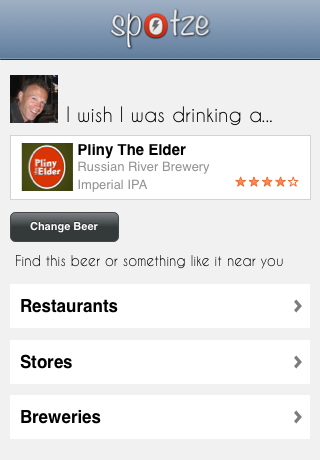
Editor’s Note: This article has corrected “Moe’s Barbecue” to “Moe’s Southwest Grill,” a separate entity.
From banking to baking, there seems to be an app for every activity under the sun. Smartphone applications are available to more than half of cell phone holders in America, and 43 percent of cell phone users today have apps on their phone, according to a study from the Pew Internet Project.
Apps for dining are some of the more common, and they’re evolving to become functional across multiple social networking platforms, focusing on communities. Forkly, a Denver-made app aimed to help users explore restaurants and dishes, will be working with other collaborators to present the 2012 Bacon and Beer Festival Dec. 9 at Denver’s Mile High Station.
“One of the reasons we started Forkly in Denver was to get the state’s exciting, fast-growing culinary scene on the national map,” says Brady Becker, cofounder of Forkly. “An event like Denver Bacon and Beer not only celebrates Colorado’s array of talented chefs and brewers, but it’s one that gives Forkly’s regional community the opportunity to discover what local chefs are cooking, to share it with global users, and to simultaneously help fight hunger.”
Becker says Forkly could connect people to notable top chefs at restaurants in their area.
“One of the cool things is that people actually like to follow those chefs,” he says. “So it creates like a community around the actual person who’s around the food at given restaurants.”
Boulder-born food app Splick-it first started as a quick solution to keeping customers from standing in long lines when ordering food or drinks.
“It started out as you texting your order, and magically it would charge your account and you’d have your coffee waiting and that was it,” says Linds Panther, the marketing manager for Splick-it. “And then several years ago, [the company] realized that apps were kind of becoming a big deal, so the company shifted into apps.”
Screenshot of Splick-It
Restaurants like Snarf’s, Tokyo Joe’s, Illegal Pete’s and Moe’s Southwest Grill all have apps that are powered by Splick-it, and users can order and pay for their food through the app. Panther says that restaurants will also be able to get to know their customers better with the help of Splick-it.
“Because you’re ordering with your phone, we start to know who you are as a customer and we can give that information to the brand so that they can create a more tailored experience for you,” he says.
Robert Taylor, founder and chairman at Splick-it, adds that social networking plays a big role in the development of the app and company.
“We’re the first ones that really integrated the social,” says Taylor. “Being able to share your order with your Facebook friends or your Twitter friends, we view as a really powerful way to start sharing the brands across your friends.”
For sociable foodies that rave about Boulder’s wide selection of happy hours, Boulder Happy Hours is an app that meets the demands of this exact crowd.
“I’m a big happy hour fan, personally,” says Paul Cox, owner of the Boulder Happy Hours app. “There’s never a place to go to have all the information to find out which bars or restaurants are having specials; there’s other happy hour websites out there but I’ve found that most of them are outdated, the information’s not current and so you’re kinda scrambling around, looking up on Google and stuff.”
The app was released two weeks ago, says Cox. It follows his success with the same kind of app for happy hours in Omaha, Neb.
“On the app, you can find all the happy hours based on the current day and time and GPS location,” Cox says. “So it will pull the ones that are closest to you and sort them from closest to farthest away.”
Boulder Happy Hours does not just limit itself to listing hours and specials. Cox says that the app allows users to search restaurants and bars by categories, email and share menus with friends, as well as seek transportation services.
“One of the features that people really like is that you can call a taxicab,” he says.
Similarly, Spotze, an app in the works from Boulder app developer Jacob Timm, will be able to connect users’ drink preferences with nearby restaurants.
“I think places like The Med, where there’s a really crowded happy hour, it will work well in that environment,” Timm says. “You can’t always say what you want when you want to.”
Timm says that he will add food soon and that the app will also target hotels, stores, breweries and restaurants.
“Right now, we are accepting requests to be part of the beta test launch for the new product,” he says.
Timm previously developed the first version of Spotze for Apple’s iPhones and iPads, which enabled users to access a restaurant’s menu, order items, call for a server and pay for the bill, all on their own time.
“I guess the best way to describe it is, if you were to walk into a restaurant where it was installed,” he says, “you would be able to locate yourself at the table and restaurant you’re at, and just by opening up the app, you’re able to see the menu and place orders.”
With the second version of the app, Timm is focused on getting a strong base set up in Boulder before potentially expanding to different regions in the state or country.
“I really like it to get local functionality first,” he says. “It’s just more meaningful if you have everybody in this area using it.”
Respond: [email protected]














